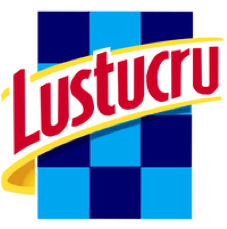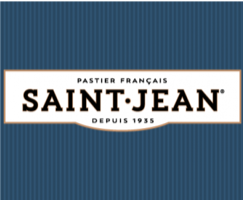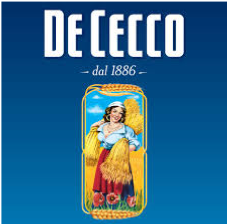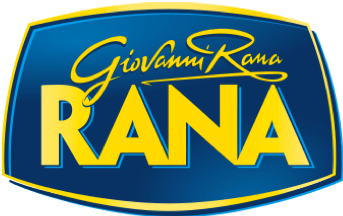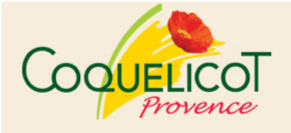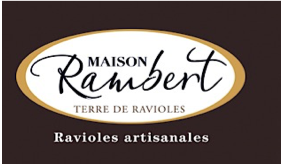Synthèse
The French pasta market, part of the larger starchy food sector, experienced significant fluctuations from 2020 onwards. In 2022, overall pasta sales escalated nearly 20% in value, despite a slight 0.5% drop in volume, largely due to rising raw material costs incurred by producers which were then passed on to consumers. This increase comes amidst a general inflationary context which persisted into 2023. Specialty segments such as premium and "wellness" pasta, including organic and wholewheat varieties, saw buoyant growth, even as the organic sector faced a downturn in 2022 with a contraction of 7.5%. On the production front, price indices for basic ingredients such as durum wheat and eggs soared, with egg producer prices alone rising by roughly 81%.
French pasta production is concentrated among a few large firms, with Ebro Foods (Panzani) owning a dominant market share. Competitively, private labels gained prominence, while the Italian brand Barilla fortified its position, aiming to become the market leader in France and investing significantly into its French operations, with sales reaching €720 million in 2022. France's pasta imports predominantly come from Italy, which remains the major supplier. Export values only grew modestly, leading to a worsening trade balance. The overall market trends reflect a growing consumer emphasis on quality and health, even as financial considerations due to inflation affect purchasing power and market dynamics
The French Pasta Market: Navigating the Trends of a Mature, Evolving Industry
In France, pasta enjoys a dominant position within the starch market, signifying its importance as a staple in the French diet. With a market size of approximately 1.9 billion euros for starchy foods, pasta represents a significant slice of the pie, amounting to a turnover of about 980 million euros. This showcases the considerable weight pasta holds within the broader food sector. The French consumer's affection for pasta is reflected in their consumption habits, with about 70% of the population indulging in this food at least once weekly. Among the most favored types, spaghetti stands at the forefront, while varieties like penne, fusilli, and tagliatelle share the second spot in popularity.
However, the pasta market in France is not without its challenges. This is a market of gradual growth, struggling with competition from substitutes like quinoa and bulgur. Additionally, influential Italian competitors such as Barilla are making significant advancements, turning the heat up in an already intense market.
Industry players have managed to navigate through a period of heightened raw material costs, effectively transmitting these price rises to consumers. Despite this, with ongoing inflation anticipated to carry on through the current year, producers must remain strategic and adaptable. A deep dive into the production side reveals the market's high dependency on raw material prices, especially durum wheat, the principal ingredient in most pasta. Notably, the prices for durum wheat and eggs have seen striking increases of late, thereby impacting production costs profoundly. The French pasta market is highly concentrated, with a few key players like Ebro Foods (owning brands Panzani and Lustucru) consolidating their hold on the scene.
This pattern extends to the distribution of pasta, which largely occurs through supermarkets, accounting for nearly 80% of sales, with hard discounts stores also playing their role. Pasta types and product positioning vary considerably, from commonly consumed dry pasta to fresh and stuffed varieties. As consumer preferences evolve, interest in segments like wellness pasta (including whole-wheat, gluten-free, and other cereals) is on the rise, indicating an inclination towards healthier alternatives. Likewise, the premium segment is showing vigor, with consumers willing to pay more for superior quality. In the face of strong competition from private labels, which attract customers with lower pricing, brands are also leveraging.
Profiling the Titans of the French Pasta Market
In the thriving landscape of the French pasta market, a few prominent companies stand out for their significant market presence and strategic positioning. These industry behemoths have not only managed to capture substantial shares of the market but have also contributed to the ever-evolving pasta trends that continue to shape consumer preferences and market dynamics.
- Ebro Foods - At the pinnacle of the pasta market, the Spanish food conglomerate Ebro Foods flexes its culinary muscles through its venerated subsidiaries, Panzani and Lustucru frais. Reigning supreme with a lucrative 60% of the sector's sales, Ebro Foods has established itself as the uncontested leader in the market. With a diverse range of pasta offerings from dry staples to more sophisticated fresh and special varieties, Ebro Foods has managed to etch its legacy in the pasta bowls of French households.
- Saint Jean Eminently - Known for its heart and soul in pasta craftsmanship, Saint Jean brings a familiar touch to the French pasta scene. This company has distinguished itself with a dedication to tradition and quality, often revered for its fresh and stuffed pasta varieties. Though not as colossal as its Spanish counterpart, Saint Jean holds its ground with a respectable presence and continues to endear itself to a loyal customer base that values authenticity and culinary refinement.
- Pastacorp - The Pastacorp Group, which includes Pastacorp and Pastacorp frais/traiteur, has proven its might as a formidable player in the French market. With a keen eye for segment-specific demands, Pastacorp has ingeniously diversified its portfolio to cater to a wide range of pasta preferences. Its hand in the fresh pasta and ready-to-eat sectors exemplifies its adaptive strategy to address the varying palates of the French populace.
- Alpina Savoie - Alpina Savoie's story is one steeped in regional pride and a commitment to harnessing local ingredients. Specializing in niche segments such as the adored crozets, Alpina Savoie has managed to capture a unique segment of the market that appreciates the harmony of traditional flavors with modern culinary techniques. As a part of the Galapagos group, it contributes to a broader gastronomic experience beyond the conventional pasta offerings.
Each of these companies, while different in their approaches and market niches, together weaves the rich tapestry that is the French pasta market. Their collective contributions continue to shape a mature industry that remains responsive to the evolving tastes and trends.
à la compréhension de ce marché
Détail du contenu
 Informations
Informations
- Nombre de pages : 30 pages
- Format : Version digitale et PDF
- Dernière mise à jour : 04/10/2023
 Sommaire et extraits
Sommaire et extraits
1 Market overview
1.1 Definition and scope of study
Pasta is a foodstuff made from flour, durum wheat semolina, other cereals, water and sometimes egg and salt. The pasta market is structured around the manufacture and marketing of two types of product: dry pasta and fresh pasta.
The pasta market includes producers of wheat and other raw materials, industrial manufacturers, supermarkets, drives, convenience stores, etc.
On the French market, pasta accounts for 47% of all starchy foods, with domestic consumption reaching 566,616 tonnes in 2022. Pape is a staple of the French diet. It is consumed by most households (penetration rate 95%) and in large quantities (annual consumption 8kg / inhabitant). The pasta market is therefore a mature one.
It is also a highly concentrated market in France. A few major operators, both diversified (Ebro Foods) and specialists in the sector (Pastacorp, Saint Jean), account for over 90% of supply. The remainder of production is dispersed among small, highly fragmented artisanal manufacturers.
The market has recently been boosted by a move upmarket and a consumer craze for premium or "wellness" pasta. in this respect, fresh pasta is enjoying real dynamism, which augurs well for the future of this large-scale market.
Between 2015 and 2021, overall sales by pasta and couscous producers rose by an average of 0.4% in value terms, a rate of growth that was below that of inflation .
However, in 2022, the sector saw a substantial increase in sales, mainly attributable to a significant rise in prices, with an increase of almost20% in terms of value, despite a slight decrease of 0.5% in volume. This success was made possible by the ability of industry players to pass on rising raw material costs to consumers.
Nevertheless, with inflation set to persist into 2023, and Italian competitors such as Barilla making major inroads into the French market, the sector faces major challenges. In addition, the crisis in the organic food sector is having an impact on certain branches of the industry.
1.2 Sluggish growth in the European pasta market
Pasta production in the European Union is currently growing slowly (***) between **** and ****.
Italy holds the lion's share of the pasta production market, with a market share of around **.*%, representing a production of *.* million tonnes of pasta in ****.
Pasta production and consumption European Union, ****-****, thousands of tons Source: ****
1.3 Key figures for the French pasta market
The pasta market within the starch market
Pasta is part of the larger starch market. In ****, in the April-**** special issue (***), LSA conso reveals a market size of *.*** billion euros for starchy foods .
Within the starch market, pasta accounts for the largest share of sales, with ***.** million euros in ****.the market ...
1.4 Foreign trade in pasta
To establish the trade balance for pasta, we use the harmonized customs system, and more specifically code ****: Pasta, whether or not cooked or stuffed with meat or other substances, or otherwise prepared, such as spaghetti, macaroni, noodles, lasagne, gnocchi, ravioli, cannelloni; couscous, whether or not prepared. the UN comtrade site enables ...
1.5 The impact of Covid-19
Covid-** had an impact on pasta sales. Many French people stocked up on pasta during the month of March **** in view of the confinement, which led to a sharp rise in sales, particularly in supermarkets during this period. As a result, the sector's sales surged in March **** to a record level, ...
2 Demand analysis
2.1 Strong demand in France
**% of French people say they eat pasta at least once a week, while **% admit to eating it more than once a week. Among Millennials aged **-**, this figure rises to **%.
Pasta consumption frequency in France France, ****, % of total Source: ****
The favorite pasta of the French is Spaghetti, favored by **% of voters, ...
2.2 Pasta consumers in France
In its February **** study, FranceAgriMer reveals various characteristics of pasta consumers. For example, the chart below reports pasta's share of overall household starch consumption by age of the person responsible for the purchase.
Share of pasta in household starch consumption by age of purchaser France, ****, in % source : Synthèse **** - ...
2.3 Where and when to eat pasta
Finally, the FranceAgriMer study reveals where the French eat the most pasta.
Breakdown of pasta consumption France, ****, in Source: ****
Unsurprisingly, the preferred place of consumption by the French is at home, with only **% of consumption involving snacking or restaurant consumption. As for the time of day when the French consume the ...
2.4 New demand trends: quality in the spotlight
While pasta has long represented an inexpensive dish, aimed primarily at people in a hurry or of modest means, it has now adapted to increasingly demanding consumers. This is a global trend in the agri-food sector: more and more consumers are paying attention to the products they consume, using applications such ...
2.5 Barilla: France's favourite pasta brand
Barilla is France's favorite brand, with **% of those questioned saying they liked it. However, Panzani and Lustucru are the most recognized brands in France, with **.*% and **.*% aided awareness respectively.
France's favorite pasta brand France, ****, in Source: ****
The Panzani brand registers the greatest disparity in appreciation rates between CSP+ and CSP-, a ...
3 Market structure
3.1 Pasta production highly dependent on raw material prices
Producer prices as a market indicator
The vast majority of pasta products are made from a mixture of durum wheat, semolina and water, to which eggs and natural additives may be added. It should be noted, however, that the gluten-free segment and alternative cereals (***) are growing rapidly. The main ingredient on ...
3.2 A highly concentrated French market
A highly concentrated market
The industrial fabric of pasta production is essentially made up of small structures (***), accounts for **% of the sector's sales. The top ten players accounted for almost **%. [***]
The fresh pasta market: as dynamic as ever
Fresh pasta is the most dynamic segment of the pasta market, and the ...
3.3 Pasta distribution in France
In France, the distribution channels preferred by consumers are :
Supermarkets (***) Hard Discount (***)
However, new distribution channels are developing:
Drives and internet purchases account for a growing share of distribution (***), with sites such as Eataly Consumption in local networks, with a return to the roots (***) such as Pastificio Passerini in Paris. These ...
3.4 Competition from private labels and Italian company Barilla
Private labels in the race
Traditional pasta brands are facing increasing competition from supermarkets with their private labels. Private labels enjoy several advantages, the most important of which is often price: they are around ** centimes cheaper than daily pasta. [***]
Retail chains are tending to offer an ever-increasing number of private labels. ...
3.5 Distribution of players in the region
Production players in the region
between **** and ****, the number of establishments rose by around **% to reach a total of ***.
Number of pasta manufacturing establishments France, ****-****, Number of establishments
Over the period from **** to ****, the number of employees remained relatively stable, recording a modest increase of just *%. Thus, in ****, the average ...
4 Offer analysis
4.1 Different types of pasta
The pasta market is made up of different products:
Dry pasta (***) is one of the staple foods of the French. They come in many shapes and sizes: quick-cooking, wholewheat, other cereals, fancy, long, short, various shapes and colors, gluten-free. The most common are spaghetti, coquillettes, penne and farfalle;
Fresh pasta: sold ...
4.2 Product positioning
Shapes
Manufacturers need to master a wide variety of pasta shapes, since the consumer's choice will depend on the type of accompaniment: thin pasta in soups, curved pasta in sauces, smooth pasta with cream.
Producing this or that shape of pasta does not represent any major manufacturing difficulty (***).
Colors
They provide ...
4.3 Average consumer price and price ranges
Despite notable price stability between **** and ****, the year **** saw a significant impact of inflation and rising production costs on consumer prices for pasta and couscous. Indeed, in ****,an increase of **% was recorded in consumer prices, and in ****, this trend became even more pronounced, with a further rise of **.**%.
Over the period ...
4.4 Innovations for consumers
Surfing on the wave of an active search for well-being through healthy eating, the wellness pasta segment has also seen strong growth. [***] Whole-wheat and other cereal-based pasta ranges, as well as gluten-free products, have greatly diversified, fuelling this trend. The organic pasta segment has also seen dynamic growth, as the concern ...
5 Regulations
5.1 General regulations
Pasta legislation According to legifrance.gouv.fr; It is forbidden to sell :
*° Pasta containing more than **.*% water, with the exception of fresh pasta sold under this name; *° Pasta with an acidity content higher than the maximum set by order of the Minister of Agriculture. NOTA : Decree ****-*** of July **, **** art. ...
6 Positioning the players
6.1 Segmentation
If Panzani, the brand of Spanish agri-food leader Ebro Foods, is the undisputed leader of the French market as a whole (***), this is primarily because it dominates the dry pasta segment, the most important in France.
However, in the other segments, other players, particularly foreign ones, take the lion's share. This ...
- Ebro Foods Group
- Pastacorp (Lustucru, Rivoire et Carret)
- Saint Jean
- Barilla
- De Cecco
- Rana (Groupe Giovanni Rana)
- Gruppo Ebro Food Gruppo Garofalo
- EA Pâtes
- Ateliers bio de Provence - Coquelicot
- SGS AGRAL (mère Maury)
- La Raviole du Dauphin
- Horvat
- Les ravioles des grands goulets
- Galapagos Gourmet
- La Molisana
- Panzani
- Alpina Savoie
 Liste des graphiques
Liste des graphiques
- Production et consommation de pâtes
- Répartition du chiffre d'affaires des pâtes fraîches
- Évolution du chiffre d'affaire des producteurs de pâtes et de couscous
- Fréquence de consommation des pâtes en France
- Les pâtes préférées des français en 2021
Toutes nos études sont disponible en ligne et en PDF
Nous vous proposons de consulter un exemple de notre travail d'étude sur un autre marché !
Dernières actualités
Entreprises citées dans cette étude
Cette étude contient un panorama complet des entreprises du marché avec les derniers chiffres et actualités de chaque entreprise :
 Choisir cette étude c'est :
Choisir cette étude c'est :
Accéder à plus de 35 heures de travail
Nos études sont le résultat de plus de 35 heures de recherches et d'analyses. Utiliser nos études vous permet de consacrer plus de temps et de valeur ajoutée à vos projets.
Profiter de 6 années d'expérience et de plus de 1500 études sectorielles déjà produites
Notre expertise nous permet de produire des études complètes dans tous les secteurs, y compris des marchés de niche ou naissants.
Notre savoir-faire et notre méthodologie nous permet de produire des études avec un rapport qualité-prix unique
Accéder à plusieurs milliers d'articles et données payantes
Businesscoot a accès à l'ensemble de la presse économique payante ainsi qu'à des bases de données exclusives pour réaliser ses études de marché (+ 30 000 articles et sources privées).
Afin d'enrichir nos études, nos analystes utilisent également des indicateurs web (semrush, trends…) pour identifier les tendances sur un marché et les stratégies des entreprises. (Consulter nos sources payantes)
Un accompagnement garanti après votre achat
Une équipe dédiée au service après-vente, pour vous garantir un niveau de satisfaction élevé. (+33) 9 70 46 55 00
Un format digital pensé pour nos utilisateurs
Vous accédez à un PDF mais aussi à une version digitale pensée pour nos clients. Cette version vous permet d’accéder aux sources, aux données au format Excel et aux graphiques. Le contenu de l'étude peut ainsi être facilement récupéré et adapté pour vos supports.
 Nos offres :
Nos offres :
the pasta market | France
- Quels sont les chiffres sur la taille et la croissance du marché ?
- Quels leviers tirent la croissance du marché et leur évolution ?
- Quel est le positionnement des entreprises sur la chaine de valeur ?
- Comment se différencient les entreprises du marché ?
- Données issues de plusieurs dizaines de bases de données
Pack 5 études (-15%) France
- 5 études au prix de 75,6€HT par étude à choisir parmi nos 800 titres sur le catalogue France pendant 12 mois
- Conservez -15% sur les études supplémentaires achetées
- Choisissez le remboursement des crédits non consommés au terme des 12 mois (durée du pack)
Consultez les conditions du pack et de remboursement des crédits non consommés.
- 03/04/2024 - Mise à jour des données financières de l'entreprise Galapagos Gourmet
- 05/03/2024 - Ajout des informations de l'entreprise Alpina Savoie
- 02/01/2024 - Mise à jour des données financières de l'entreprise Galapagos Gourmet
- 02/10/2023 - L'étude a été intégralement actualisée par un analyste de Businesscoot. En complément de cette révision exhaustive, des données relatives à l'influence de l'inflation sur les prix de production et de consommation, ainsi que sur la demande, ont été incorporées. De plus, une analyse des nouvelles tendances du marché a été effectuée, incluant l'examen des parts de marché nouvellement acquises par différents acteurs.
- 01/10/2023 - Mise à jour des données financières de l'entreprise Galapagos Gourmet
- 21/05/2023 - Mise à jour des données financières de l'entreprise Galapagos Gourmet
- 21/02/2023 - Mise à jour des données financières de l'entreprise Panzani
- 21/02/2023 - Mise à jour des données financières de l'entreprise Ateliers bio de Provence - Coquelicot
- 20/02/2023 - Mise à jour des données financières de l'entreprise Galapagos
- 15/01/2023 - Ajout des informations de l'entreprise Panzani




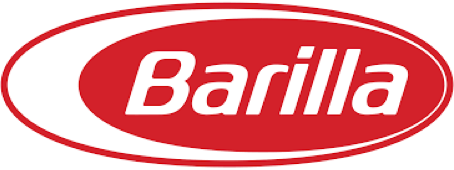 Barilla perde il secondo round della guerra dei biscotti - 02/04/2024
Barilla perde il secondo round della guerra dei biscotti - 02/04/2024
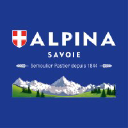 Le propriétaire d'Alpina Savoie relance les pâtes alsaciennes Jules Thirion - 05/03/2024
Le propriétaire d'Alpina Savoie relance les pâtes alsaciennes Jules Thirion - 05/03/2024
 Panzani se lance dans les pâtes fraîches et noue un partenariat avec des industriels italiens - 08/02/2024
Panzani se lance dans les pâtes fraîches et noue un partenariat avec des industriels italiens - 08/02/2024

